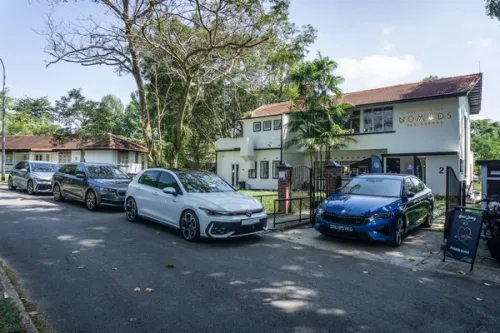
As many families are switching from sedans to cars that can offer a little more than just transport, we tend to take a lean to more utility, especially when we have a young family in tow.
While many have found that apart from sporty-good looks, the ease of loading and unloading with station wagon-like utility, and easy entry and exit have made the SUV a choice mode of transport for young families. Today, we look at the practical and value-for-money aspects of new 2 makes, the Kia Sportage and Suzuki Vitara.
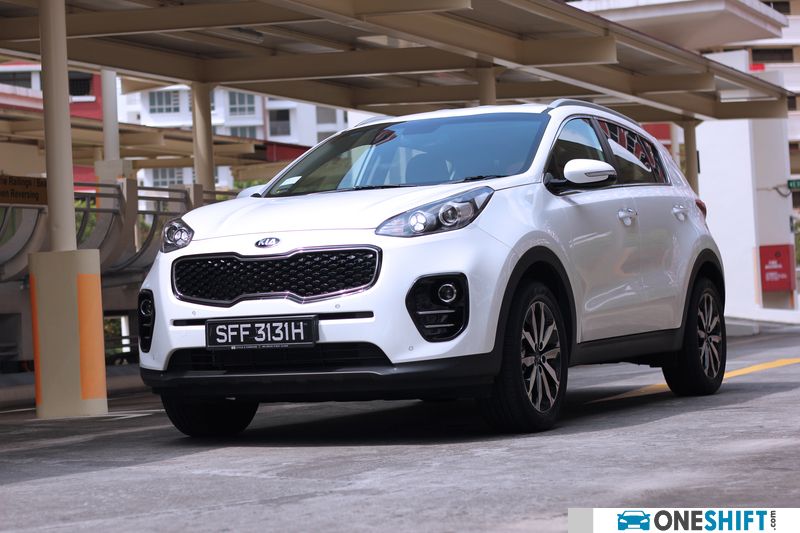

The Kia is the larger vehicle at 4,480mm in length versus the Vitara’s 4,175mm, but what kind of flexibility would both cars offer?
Apart from groceries, there are other items that a young family would find themselves loading into the cargo area, you’d be surprised at kind of things that would eventually find their way into a car.
The Vitara’s 375 litres of (seats unfolded) cargo space would mean that can swallow a stroller or 2 (given that a folded stroller is about 110X35X30cm), and maybe a pair of booster seats, together with mom’s groceries. The Kia on the other hand would be a better candidate to do the above, and to add on dad’s set of golf clubs which he had not taken out the night before. With a maximum width of 134cm across, allowing longer items to be carried width-ward for ease of access. Folding the seats of both cars down would reveal a maximum of 710 litres and 1,492 litres for the Vitara and Sportage respectively. Seats for both cars fold almost flat.


The higher boot lip of the Vitara would mean that removal of bulky items from the boot is going to be harder than the Kia, which has offerings of a near flat entrance, enabling you to slide things like strollers or even golf clubs off the car, rather than lifting all of 20kg clean off the lip.
There is also the other thing about installing and uninstalling child seats (especially the bigger ones) in the car, removing them from the boot, walking over to the rear to have them installed. I’ve observed many-a-time, parents hunched over attempting to have the seats installed only to come out of the car, with one arm holding their backs, discreetly nursing an ache. And then there’s round 2, where they have to load their child into the seat. The added ride height proves a bonus in this instance, as there’s so much less bending down. Just keep in mind that easier installation would also mean less frustration during installation, and hence less chances of installing the seat wrongly.

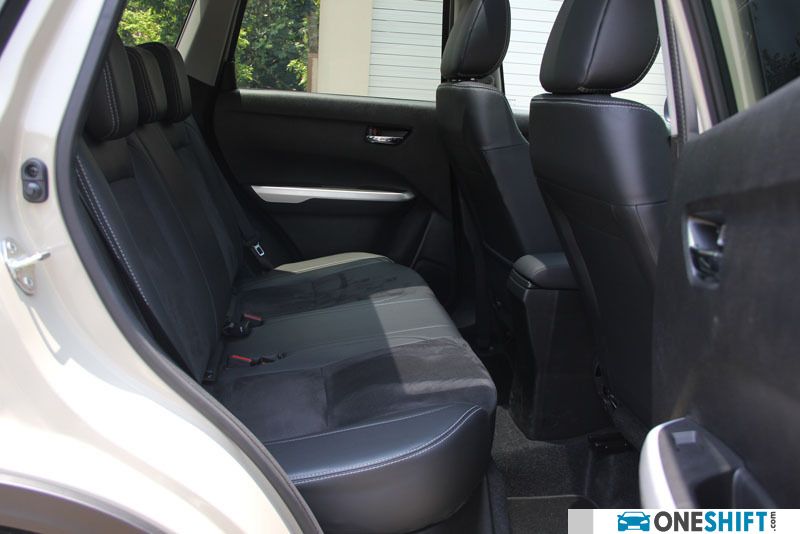
The Vitara provides power via a 1.6 litre engine, producing 118bhp, which propels the car to 100 in 12 seconds. Suzuki offers both 4 wheel-drive and front wheel drive models. We would advise on the latter, given that you do not need the former option, as you would achieve better fuel consumption figures and have better power delivery in most conditions. 18.2km/l combined fuel figures are also superior to the 4wd model’s 17.5km/l. Kia on the other hand offers a bigger car in the form of the Sportage. The Kia’s 2.0 direct-injection engine maxes out at 152bhp at 6,200rpm. Combined fuel figures for the big Korean return 12.7km/l, while delivering a 0-100 in 11.1seconds. Both cars do not like to be rushed, and were not built for quick driving, but would reward with a smooth ride if allowed to cruise on their six ratios. As they are not built on a rigid step-ladder chassis like how SUVs were originally, they are able to soak up the bumps with ease, without occupants being jolted around, though the Kia provides a softer, more comfortable ride, as with cars with a longer wheelbase.


With a width of 1,855mm, the Sportage is wider than the Vitara’s 1,775mm. Navigating our HDB carparks would require a little more care with the Korean car, due to the additional 8cm of width, especially turning and driving down the ramps. What you would get in return for that addition of space, is more cabin room width-wise. While the Vitara boasts a 2500mm wheelbase, the Sportage takes the prize of having an additional 170mm to play with, and this shows in the amount of rear legroom that both cars have to offer.
While easy to twirl around tight spaces, with the ease of driving a compact sedan, the Vitara may prove quite a squeeze for bigger adult occupants in the rear, while the Sportage allows you to sprawl out on the rear bench, which also reclines a few stops, and 970mm of leg adjustment space (almost feels like almost all the additional 170mm of wheelbase went to giving more rear legroom).


In terms of driving aids, the Kia comes equipped with parking sensors and a reversing camera, cruise control, vehicle stability management, and controlled hill descent. Other spoils come in the form of Bluetooth, USB connectivity and two 12V sockets in the front and one of each in the rear. Automatic headlamps, also audio and cruise control buttons find their way on the steering wheel. The Vitara has almost the same equipment list, though with one less 12V powerpoint under the dash. Also, the infotainment sited at the middle-top side of the dash in the Sportage is much better as there is less of a likelyhood of taking your eyes off the road by looking smack in the middle of dash, in the Vitara.

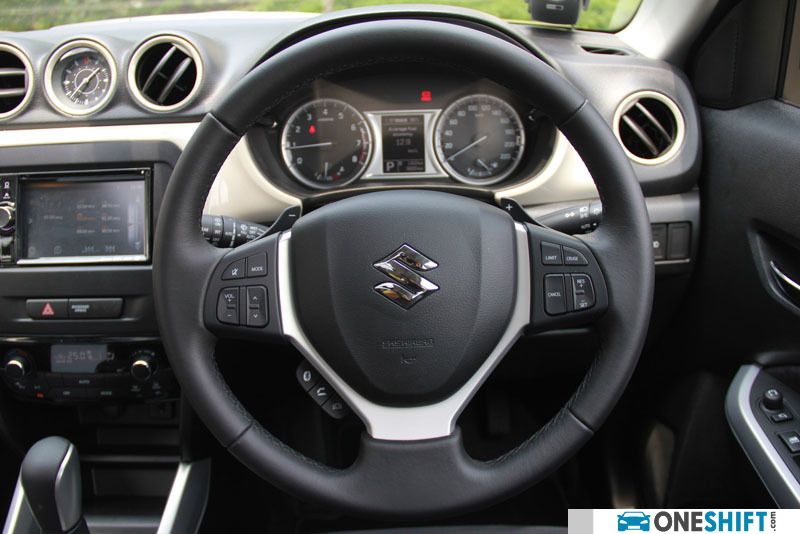
Road presence-wise, Kia’s newly styled front is really an eye-turner. With an aggressive stance, and a very upright grille, the car looks to dwarf the Vitara in comparison. The Vitara, does carry some chrome trim on the doors, and has a chromed up front grille, flanked by large LED projector headlamps.
The important question though is, would the Kia’s additional $15,000 price tag be a justified amount to pay for more car (in a physical sense)?

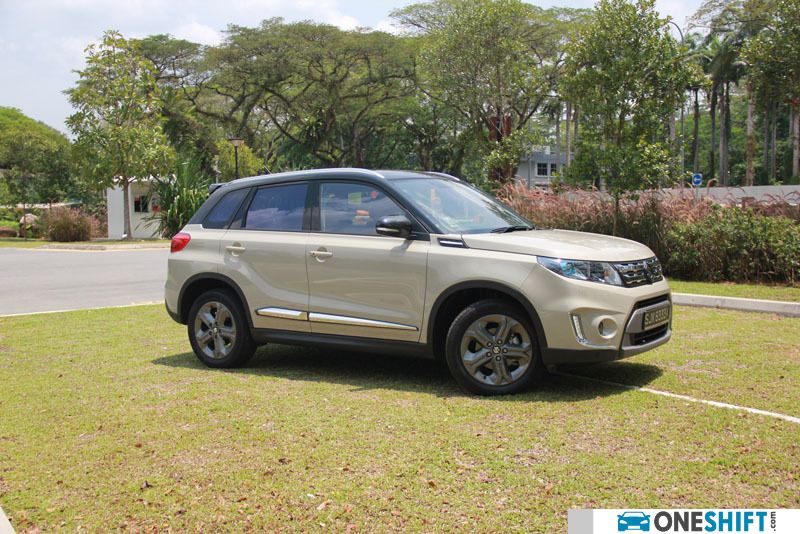
While you would save some good thousands with buying the Vitara, and it is still quite practical we might add, we would say that the Sportage would be a better buy in this context. While we like the easier to drive-smaller dimensions of the Vitara and definitely the price, if you are already looking to buy into a vehicle with good utility, the additional space, especially for rear passengers, the practical cargo room all play a part in the reason of why you would want one in the first place. The car may consume more fuel doing the job, and yes, you may find it a chore to park at times. But the key thing is, it is after all a car for the family, driving dynamics would take a secondary role here and it is ultimately passenger comfort and the space that matters. Working out the numbers over a few years would soften the blow of the additional amount that the Kia would cost, but the car simply makes more sense.
If you'd like to learn more, about both cars, do catch our Vitara review here, and the Sportage review here.
Credits:


Get the Best Price for your used car
from 500+ dealers in 24 hours

- Convenient and Hassle-Free
- Consumer Protection
Transparent Process
With No Obligation






